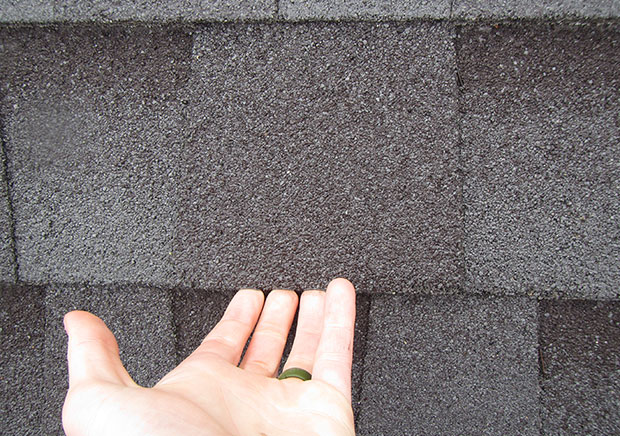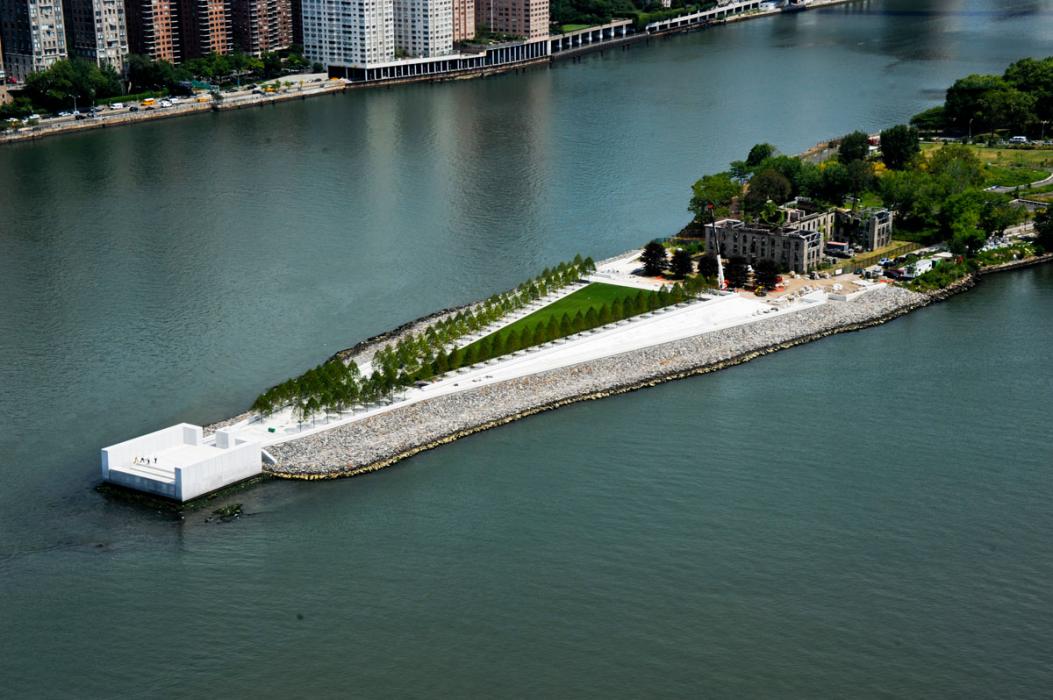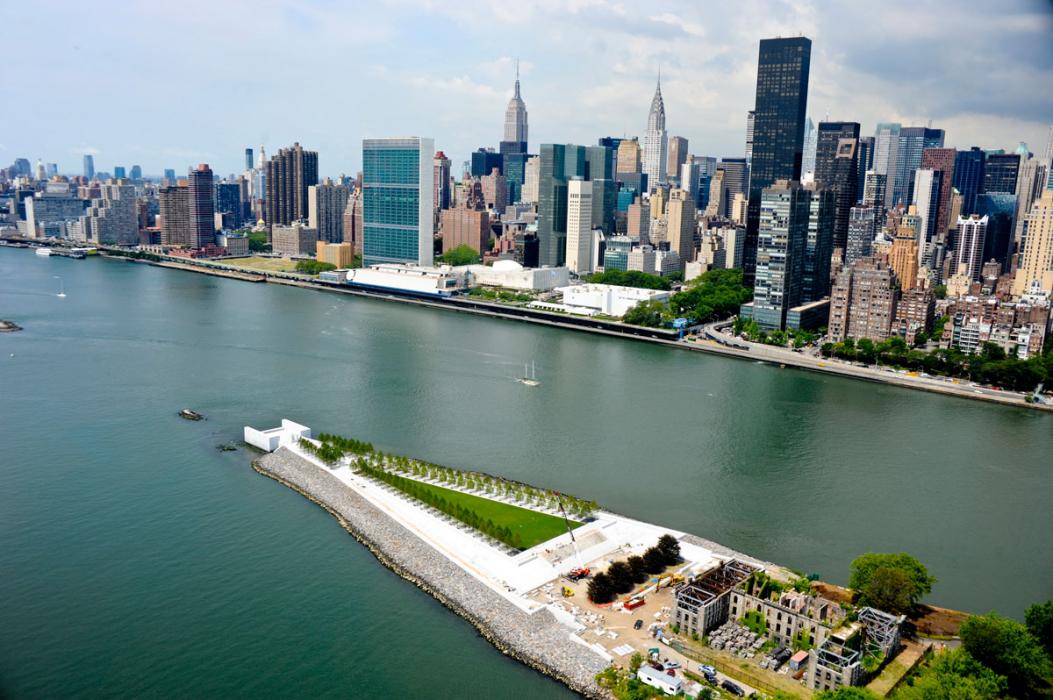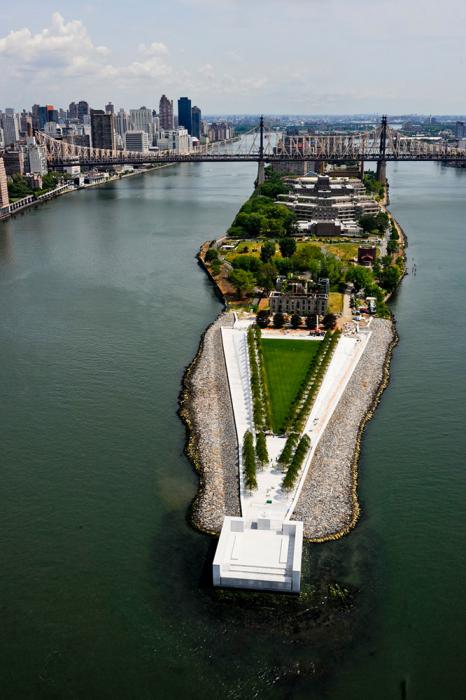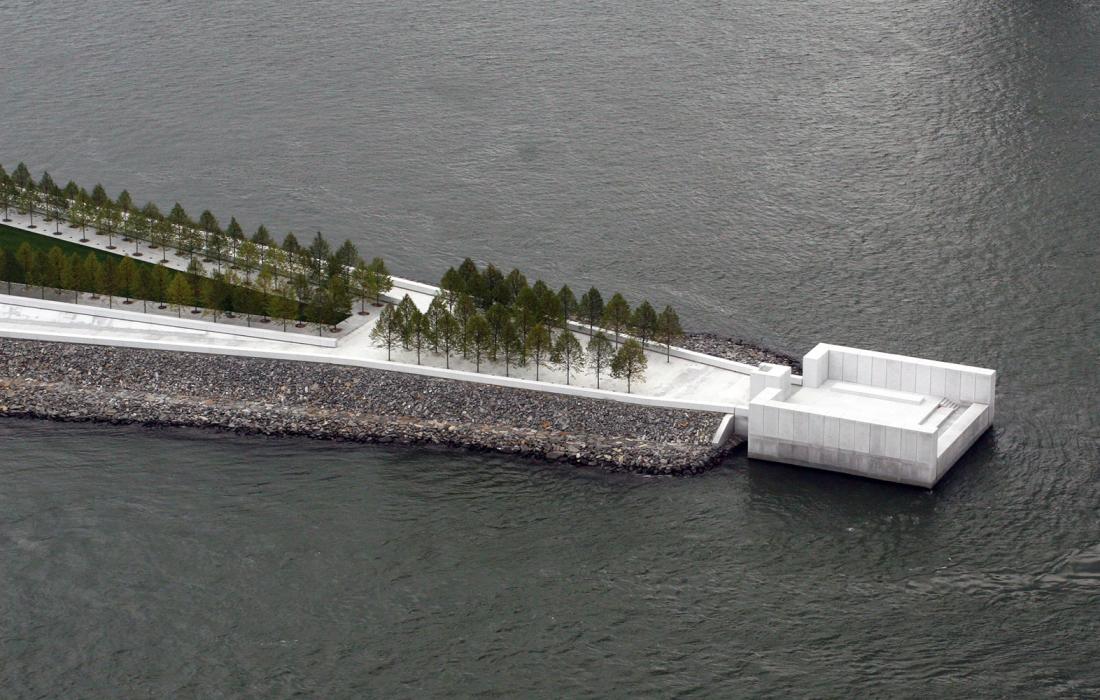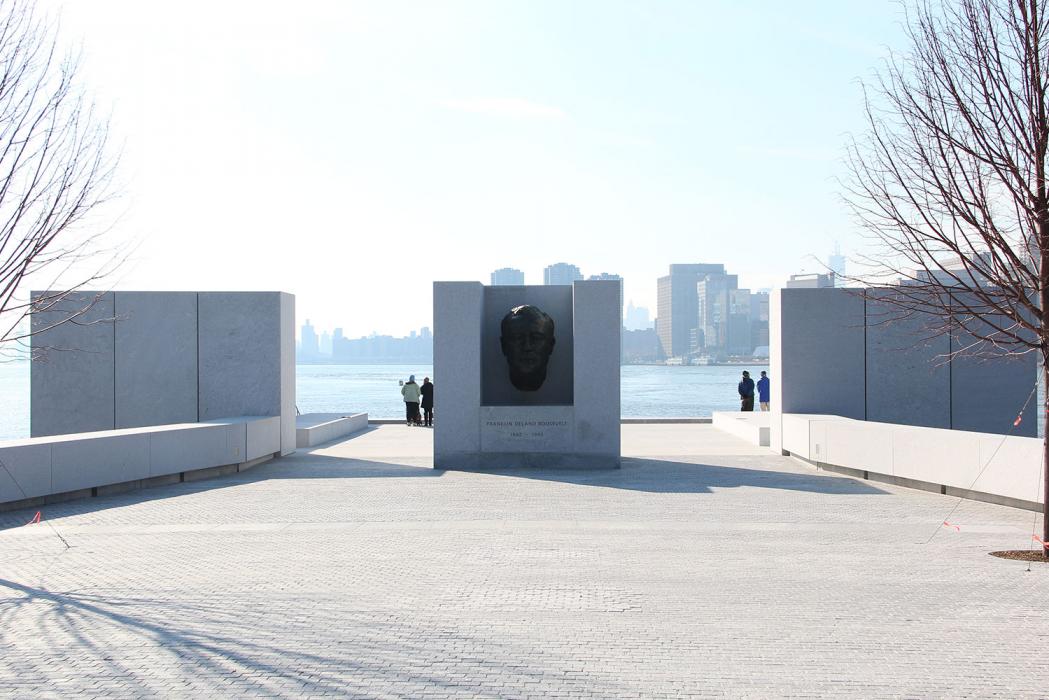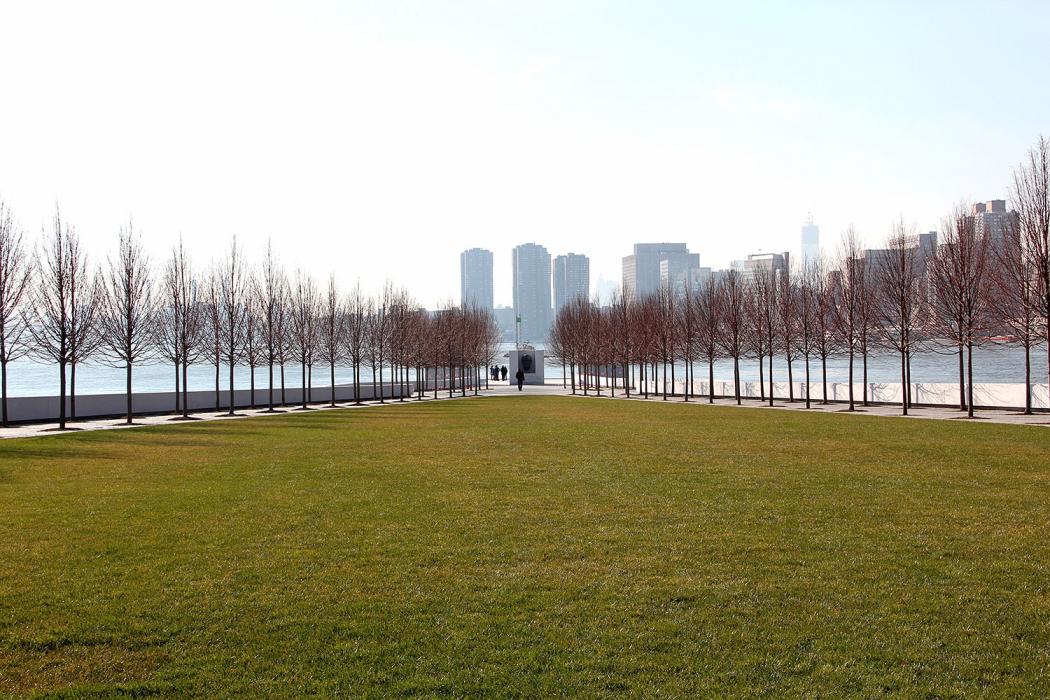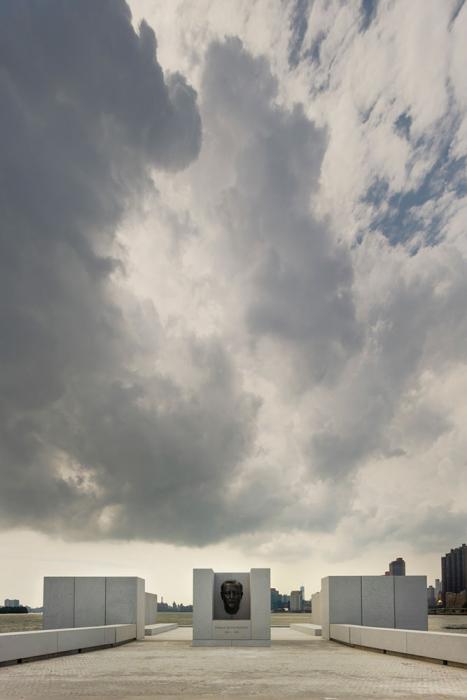
Franklin D. Roosevelt Four Freedoms Park
Located at the southernmost tip of New York’s Roosevelt Island, the four-acre Franklin D. Roosevelt Four Freedoms Park was the final work of architect Louis I. Kahn.
Lead Contact

Project Details
ENR, Award of Merit: Landscape/Hardscape/Urban Development, 2013
Overview
Located at the southernmost tip of New York’s Roosevelt Island, the Franklin D. Roosevelt Four Freedoms Park celebrates the president's "Four Freedoms" he described in his 1941 State of the Union address. The four-acre park, which was the final work of architect Louis I. Kahn, includes a monumental staircase leading to a triangular garden, which is flanked by linden-tree allées.
We provided structural design services to FDR Four Freedoms Park LLC for the park, which opened in 2010.
Highlights
- The garden culminates at a 1,050-pound bronze bust of FDR, marking the entrance to a 3,600-square-foot plaza (the “room”) surrounded by 28 36-ton columns of Mount Airy (North Carolina) granite.
- Our work included developing the foundation and raising the park elevation by 15 inches.
- To enable the columns to weather the island’s harsh marine environment, our engineers recommended that they be made entirely of granite, rather than concrete with a granite veneer, as originally specified.
- Structural-steel reinforcement was used to hold the columns together and allow them to resist storm forces and waves.






